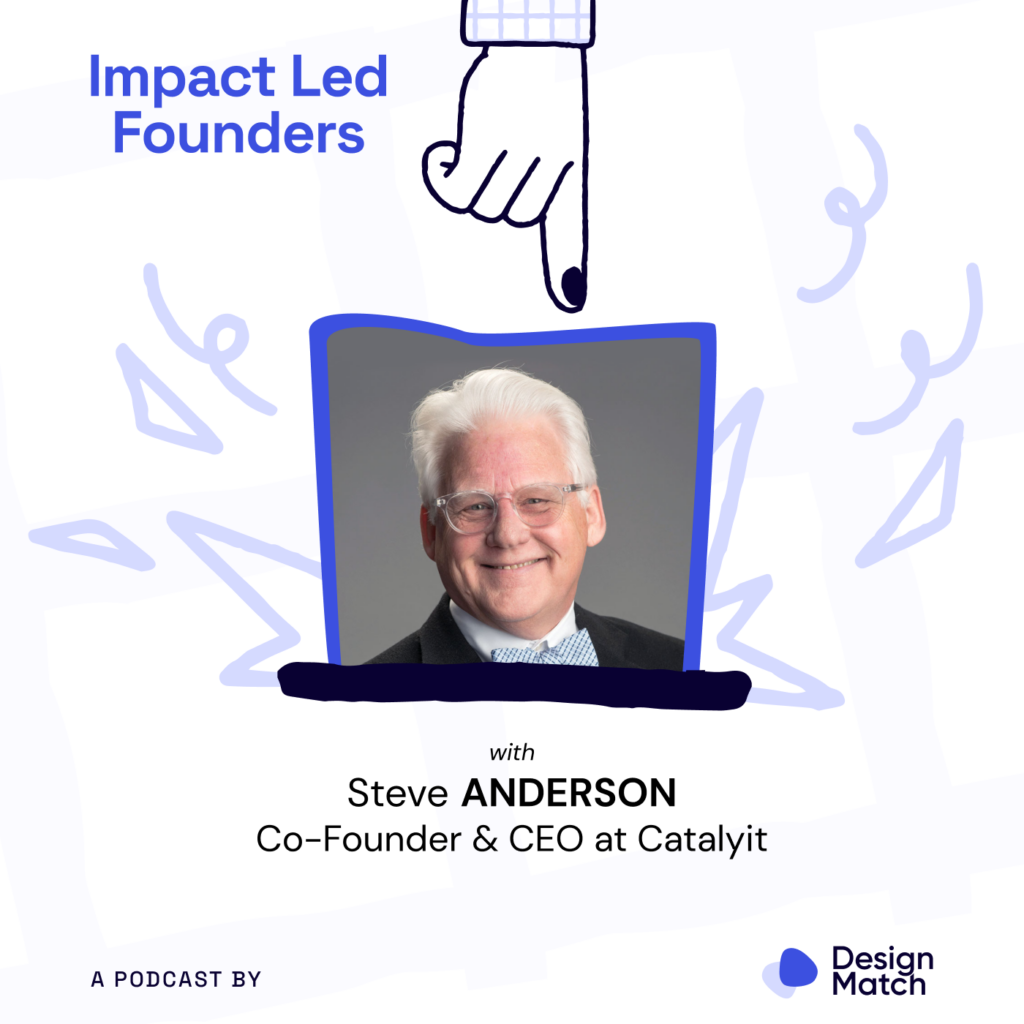Humans fear the unknown and things they don’t understand. This is true when adopting new technologies; the first reaction is inaction by standing still. Steve Anderson is the Co-Founder and CEO of Catalyit, a technology resource open to independent insurance agents to a community where they can inspire, grow, and succeed! Their goal? To combine the best minds with the best tools to deliver the single greatest tech resource in the industry. Period.
He is also the Best-Selling Author of “The Bezos Letters - 14 Principles to Grow Your Business Like Amazon,” an At Large Member of the Board for Big I New York, an Official Member of the Fast Company Executive Board, and an Advisory Board Member at the Connected Insurance Observatory.
Insurance is a person-to-person business; while technology will never replace that relationship, it can fast-track its development through text messaging, mobile apps, or online client portals. Technology can help you manage your clients better. Steve helps his agents better understand and adopt new technologies by engaging with them on three live calls monthly.
On the first Tuesday of every month, he has a call on the Hot Topic of the day, which is a deeper dive into current technology and Generative AI, like ChatGPT, and how they can help agents. The objective is to cut through the hype cycle and identify what’s practical, accurate and needs attention. The second call pivots around a Q&A session where the agents address issues they want resolved, and the wider group helps resolve these issues. The third call is a demo lounge where the software vendors give a live demo on how their technology can simplify the agents' day-to-day operations.
Managing Strategic Risk
Steve mentions that there are two sides to managing strategic risk. One is the role of technology in insurance, and the other is the question of what the biggest risk is that insurance agencies face. Steve concludes that the biggest risk is not taking enough risks. He mentions that technology is evolving rapidly and that we need to keep pace with this evolution. So, the risk of inaction is bigger than actually taking a step, doing something, and failing. This is reflected when we look at different businesses, ones that were once very successful but didn’t keep pace with technology and are no longer here, versus those that are successful and continue to be successful due to technological adoption. The first principle of managing risk is to encourage successful failure because if we’re not failing sometimes, we aren’t pushing the envelope enough.
Managing the Emotional Side of Taking Risks
Managing your emotions while taking risks goes hand-in-hand with being an entrepreneur. A case in point is Jeff Bezos, founder of Amazon, and the wealthiest person on the planet, who started on his hands and knees in a garage, packaging up books and driving them to the post office. There are two steps to managing the emotion of taking a risk. First, you need to understand that every risk is only a possibility, eliminating the element of surprise. Second, you manage the downside of the risk.
Steve highlights the case of Richard Branson, who had what seemed like a crazy idea to start an airline. What do you know about an airline? He said, not much, but I can learn. While that is a big risk, he leased his first aircraft from Boeing for a year because he said he could cover one-year lease payments if it didn't work, and he could just return the plane. Branson took a risk while managing its downside.
Employees aren't afraid of failure, but they are afraid of the consequences of failure. The company will not move forward if you have a culture of punishing, mistakes, or experiments that don't work.
Value is Non-Negotiable
When writing his book “The Bezos Letters”, Steve was fascinated by how good of a writer Jeff Bezos was. He then decided to write a summary of each letter and showed it to his wife - who happens to be in the book business - and they agreed that it needed to be a book. It ended up being a 65,000-word book which taught him a lot about business and the value people need in their businesses.
To learn more about Steve’s fascinating journey and valuable insights from his book, tune in to The Impact Led Founders Podcast By Design Match.
Highlights
📢 Embrace 'Successful Failure' for Strategic Risk Management
Strategic risk management, as per Anderson, necessitates not only a planned approach but also an emotional investment. He encourages a culture of 'successful failure', where calculated risks are seen as opportunities for learning and growth, rather than potential pitfalls.
📢 Foster Growth through Value Creation
Value creation is at the heart of sustainable business growth, believes Anderson. Drawing insights from his best-selling book "The Bezos Letters", he emphasizes the need for companies to deliver substantial value to their customers, employees, and stakeholders

